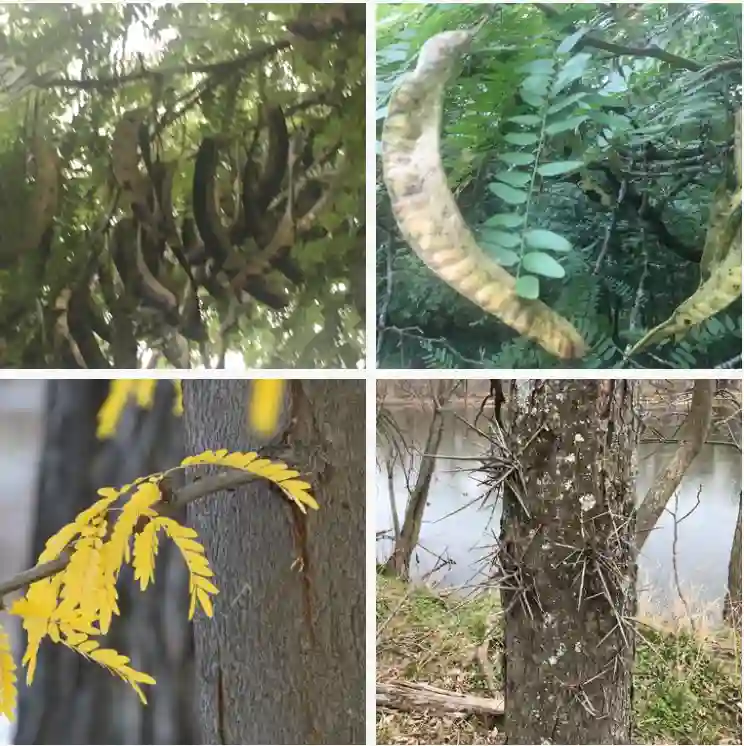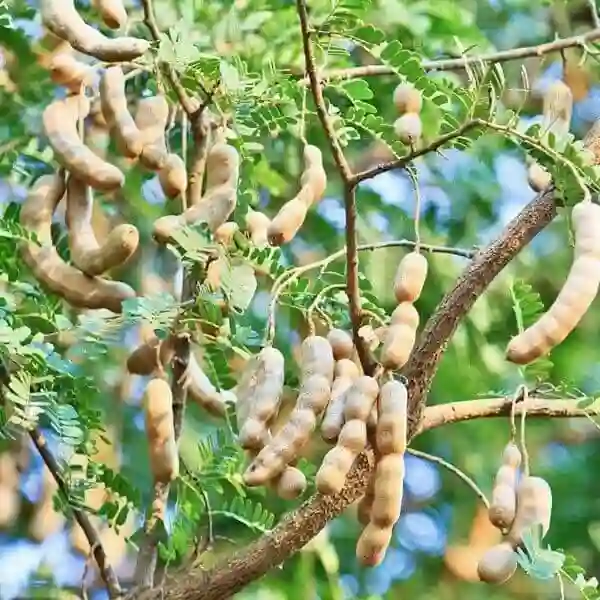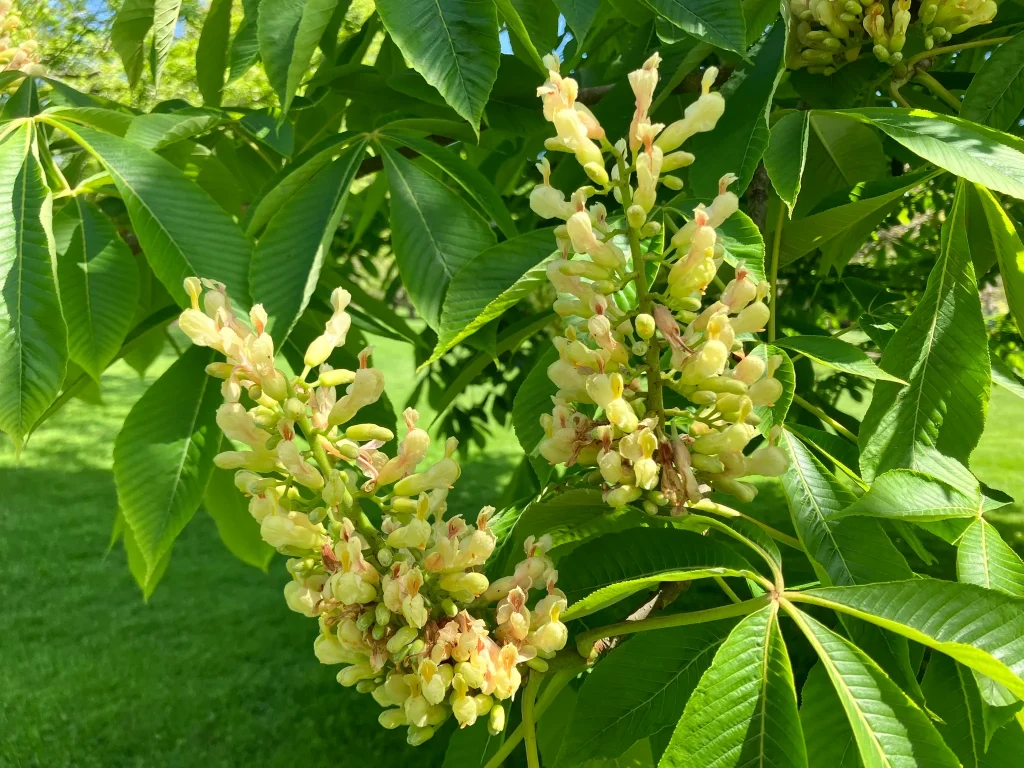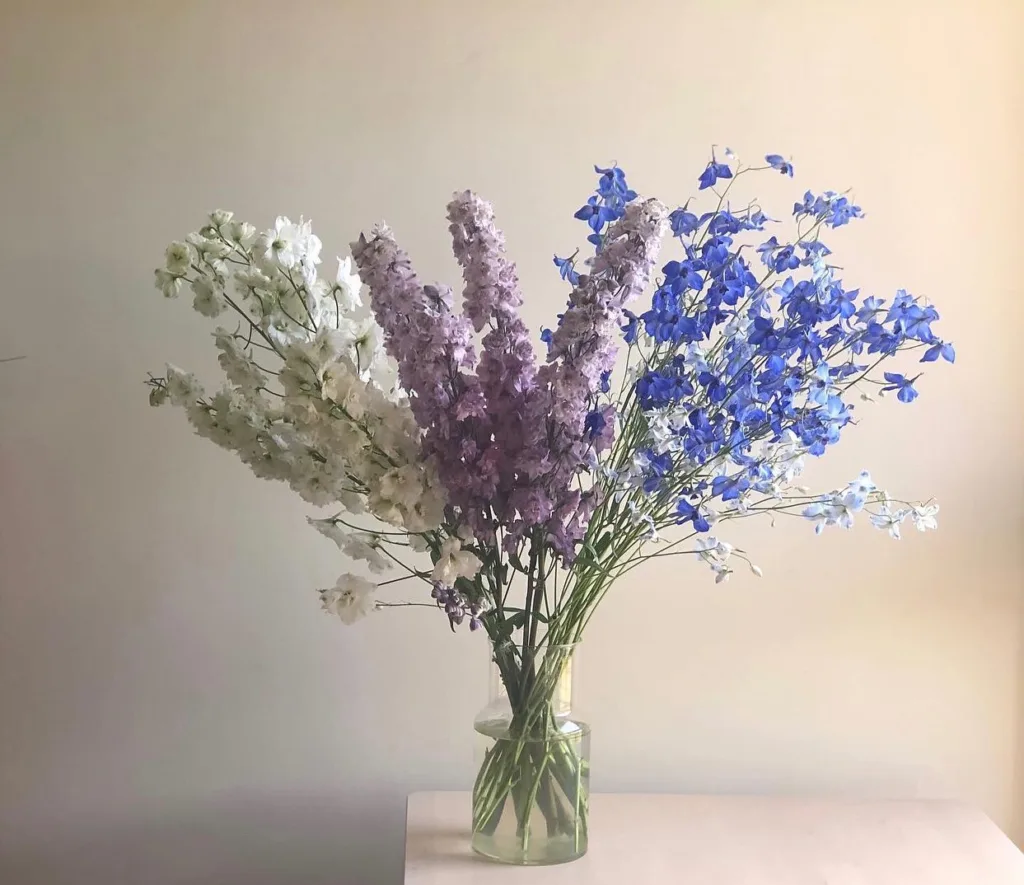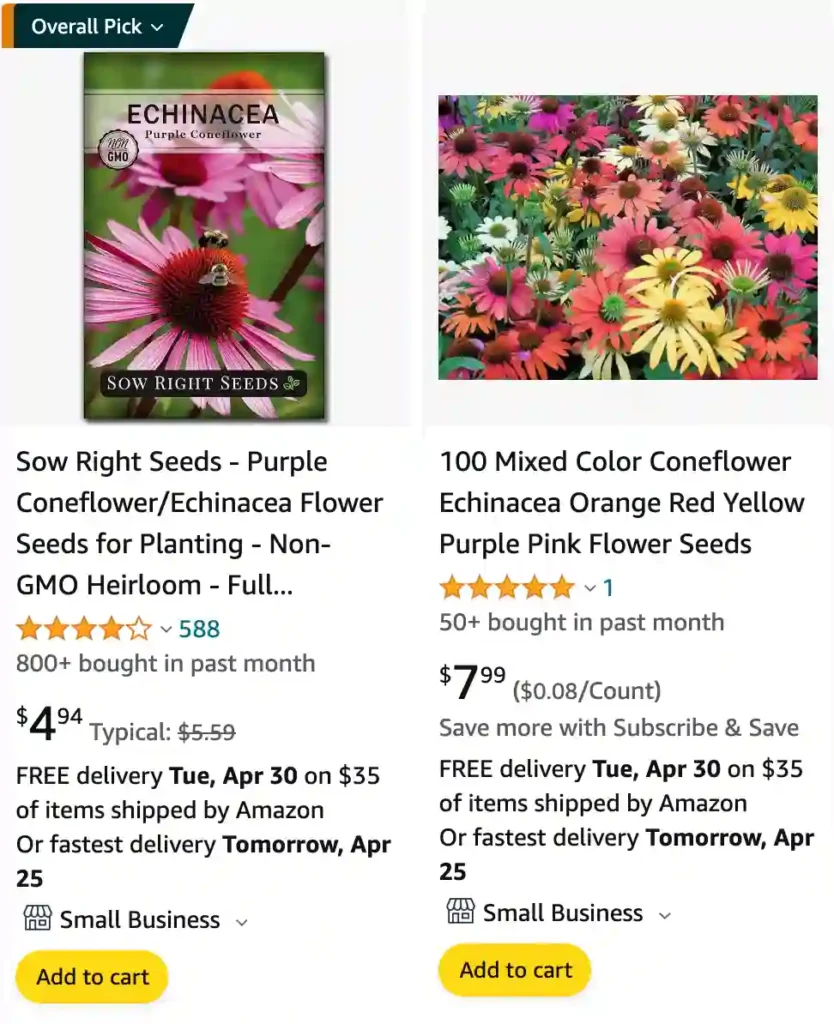
Exploring the Genus Echinacea: My Journey with Nature’s Healing Power
The genus Echinacea belong to the Asteraceae family, commonly known as coneflowers, has been a cornerstone in my gardening and herbal journey. With their vibrant colors, daisy-like structure, and medicinal reputation, Echinacea species are both visually appealing and deeply functional. Let me share my personal experiences and insights into these remarkable plants, focusing on their beauty, benefits, and care.
What does echinacea look like?
Echinacea is really pretty and easy to spot in a garden. They have bright, daisy-like flowers with petals that can be purple, pink, orange, or even white. The center of the flower is this tall, spiky cone, almost like a little crown. That cone part gets bigger and browner over time as the flower matures. The plants themselves get pretty tall, with sturdy green stems and leaves. I’ve always liked how cheerful and sturdy they look, even when battered by late summer storms.
Echinacea species
- Echinacea angustifolia DC. Plant FAQs: Echinacea Angustifolia – Blacksamson Echinacea
- Echinacea atrorubens (Nutt.) Nutt.
- Echinacea laevigata (C.L.Boynton & Beadle) S.F.Blake
- Echinacea pallida (Nutt.) Nutt. Plant FAQs: Echinacea Pallida – Pale Purple Coneflower
- Echinacea paradoxa Britton
- Echinacea purpurea (L.) Moench Plant FAQs: Echinacea Purpurea – Eastern Purple Coneflower
- Echinacea sanguinea Nutt.
- Echinacea simulata McGregor
- Echinacea tennesseensis (Beadle) Small
What do echinacea seeds look like?
Echinacea seeds are a bit funny-looking. They’re kind of long and skinny, almost like tiny slivers of wood, and have a light beige or tan color. Sometimes you can even see a little bit of dark striping on them. They remind me of the seeds you sometimes get stuck in your teeth after eating sunflower seeds. Of course, the biggest difference is that fuzzy, spiky seed head the echinacea seeds come in. That prickly dome is super distinctive!
How to grow echinacea from seed?
Here’s a guide on growing echinacea from seed, written from a personal gardening perspective:
Growing echinacea from seed is a rewarding experience, but it takes a little patience. The trickiest part is that echinacea needs a cold period to germinate well. I like to start mine indoors a couple of months before the last frost. I fill small pots with seed starting mix, poke a few seeds into each one, and just barely cover them with soil. I keep them watered and place them in a warm spot, but in the dark – covering them with a box or black plastic helps. It can take a few weeks, but those little green sprouts are so exciting to see! Once they have a few leaves, I move them to a sunny windowsill.
When the weather warms up and there’s no frost risk, I harden them off (gradually acclimate them to the outdoors). Then, I find a sunny spot in my garden with well-draining soil, dig small holes, and carefully plant my seedlings. Watering them regularly, especially at first, is important. It takes a while – sometimes a full season – before I see flowers, but it’s worth the wait. Those bright, spiky blooms are a highlight of my summer garden, and I always feel a little sense of pride knowing I started them myself!
Is echinacea a perennial?
Yes, echinacea is absolutely a perennial! That means it comes back year after year. In the fall, the leaves and flowers will die back, but the roots survive the winter. Come springtime, you’ll see new growth emerge and another season of beautiful blooms. Echinacea plants can last several years, making them a wonderful addition to any perennial garden.
When to plant echinacea?
There are a couple of good times to plant echinacea:
- Fall Planting: For the showiest blooms the following summer, plant established echinacea plants in the fall. This allows the roots to get settled in before winter and gives them a headstart on growth in spring.
- Spring Planting: You can also plant echinacea in the spring after the last frost. You might not get as many flowers that first year, but your plants will still establish themselves well.
- Starting From Seed: If you’re growing echinacea from seed, start the seeds indoors about 2 months before the last frost. Then, you can transplant your seedlings outdoors once the weather warms up.
No matter when you plant, remember that echinacea loves full sun and well-draining soil!
Do deer eat echinacea?
While echinacea is generally considered deer-resistant, the truth is a little more complicated. Deer are notoriously adaptable and, if they’re hungry enough, they’ll try almost anything. Young, tender echinacea plants might be more tempting than established ones with tougher leaves and stems. Additionally, in areas with high deer populations, or during times of food scarcity, deer might be more likely to nibble on supposedly deer-resistant plants.
So, while echinacea isn’t at the top of a deer’s menu, it’s not foolproof either. If you have a lot of deer in your area, you might want to consider additional deterrents or choose other truly deer-resistant plants.
How to harvest echinacea seeds?
Here’s how I harvest my echinacea seeds:
- Wait for the Spiky Cone: The key is to wait until the flower petals have completely dried up and the central cone has turned brown and spiky. It should be firm and no longer have any hints of green or orange.
- Cut the Stems: Using scissors or garden shears, cut the echinacea stems a few inches below the seed head. Be careful – those spiky cones can be a little prickly!
- Let Them Dry: Put the stems upside-down in a paper bag so the seed heads are at the bottom. Hang the bag in a cool, dry place for a week or two to allow the seed heads to dry out completely.
- Shake and Separate: Once everything is super dry, give the bag a good shake or roll the seed heads around between your hands. This will knock the seeds loose. It can get messy–you’ll have lots of chaff (the brown bits from the cone) mixed in with the seeds.
- Winnow or Sift: The easiest way to separate the seeds is to pour the mix into a bowl and gently blow on it – the lightweight chaff will fly away, leaving the heavier seeds behind. You can also use a kitchen sieve for this.
- Store: Store your harvested echinacea seeds in a cool, dry place in a paper envelope or airtight container. They’ll stay viable for a few years, ready to start your next batch of these beautiful flowers!
Is echinacea safe for dogs? Can dogs have echinacea?
Echinacea in small doses is generally considered safe for dogs, but it’s incredibly important to consult with your veterinarian before giving your dog any supplements or herbs. Here’s why:
- Potential Benefits: Echinacea might offer a mild immune system boost for dogs, potentially helping them fight off infections or recover from illness more quickly.
- *Potential Risks: While rare, echinacea can cause some side effects in dogs, like upset stomach or allergies. It can also interact negatively with certain medications.
- Underlying Conditions: Your veterinarian knows your dog’s health history. They can determine if echinacea is truly a good fit and won’t worsen any existing medical conditions your dog might have.
- Dosage and Form: Your vet can help you choose the right form of echinacea (like a tincture or capsule) and determine the appropriate dosage for your dog’s size and needs.
It’s always better to be safe than sorry! A quick chat with your vet can ensure that echinacea is the right choice for your furry friend.
Do echinacea spread?
Yes, echinacea does spread, but not aggressively:
- Self-Seeding: The main way echinacea spreads is by self-seeding. Their seeds naturally drop to the ground around the existing plant, and some will sprout into new seedlings the next year. This allows your echinacea patch to slowly expand.
- Clumps: Individual echinacea plants also grow larger over time, forming wider clumps at their base.
It’s worth noting:
- Controlled Spread: The spread of echinacea is generally manageable. It doesn’t take over gardens like some invasive plants can.
- Deadheading: If you want to prevent spreading, you can deadhead the flowers (cut them off after they fade) before the seeds have a chance to mature and drop.
- Welcomed Spread: Many gardeners actually like the way echinacea self-seeds, filling their gardens with more of these beautiful and beneficial flowers.
How to make echinacea tincture?
Making your own echinacea tincture is a satisfying project! Here’s a step-by-step guide:
What You’ll Need:
- Fresh or dried echinacea (root, leaves, flowers, or a combination)
- High-proof alcohol (vodka with 80-100 proof is ideal)
- A clean glass jar with a tight-fitting lid
- Cheesecloth or a coffee filter
- Dark glass bottles for storage
Instructions:
- Prepare Your Echinacea:
- Fresh: Wash your echinacea and chop it into smaller pieces.
- Dried: You can use dried echinacea as-is.
- Pack the Jar: Fill your jar about 2/3 full with the echinacea.
- Add Alcohol: Pour in enough alcohol to completely cover the echinacea and leave about an inch of space at the top of the jar.
- Store and Shake: Close the jar tightly and store it in a cool, dark place. Give it a good shake every day or two.
- Steep: Let the tincture steep for 4-6 weeks. The longer you steep, the stronger the tincture will be.
- Strain: Line a strainer with cheesecloth or a coffee filter and place it over a clean bowl. Pour the tincture through the strainer to remove the plant material.
- Bottle and Store: Transfer your strained tincture into dark glass bottles (this protects it from light). Label them with the date and contents. Store your tincture in a cool, dark place, and it should last for several years.
Dosage: The standard dosage for echinacea tincture is a dropperful a few times a day. It’s always best to consult with a healthcare professional or an experienced herbalist for personalized dosage recommendations.
When to transplant echinacea?
The best time to transplant echinacea depends on your climate and whether you’re working with established plants or seedlings:
- Established Plants:
- Fall: Ideally, transplant established echinacea plants in early fall. This gives them ample time to establish roots before winter and come back strong the following spring.
- Spring: You can also transplant in early spring after the last frost has passed. The plants might not flower as much that first year, but they’ll still get settled in for future blooms.
- Seedlings:
- Spring: If you’re transplanting seedlings you grew from seed indoors, wait until the weather warms up and there’s no danger of frost. This is usually around mid-spring in most regions.
Here are some additional factors to consider:
- Climate: In warmer climates with mild winters, fall planting might be more successful.
- Plant Size: The larger the established plant, the more challenging it will be to transplant successfully.
- Root Disturbance: Echinacea has a taproot, so try to minimize root disturbance during transplanting.
No matter when you transplant, make sure to choose a location with full sun and well-draining soil. Water your plants regularly, especially during the first few weeks after transplanting, to help them establish themselves in their new home.
Do echinacea seeds need stratification?
Yes, echinacea seeds generally benefit from stratification for better germination rates. Stratification is the process of exposing seeds to cold, moist conditions, mimicking winter and signaling to the seeds that it’s time to break dormancy.
Here’s how you can stratify echinacea seeds:
- Dampen: Lightly dampen a paper towel or coffee filter.
- Spread Seeds: Scatter your echinacea seeds on the damp material.
- Seal: Place the seeds and damp material into a zip-top bag or airtight container.
- Refrigerate: Pop the container in your refrigerator for about 4 weeks.
- Sow: After stratification, you can sow the seeds directly outdoors or start them indoors in seed trays.
While stratification isn’t absolutely essential for all varieties of echinacea, most will germinate much more consistently after a period of cold treatment.
Do rabbits eat echinacea?
While echinacea is often listed as a “rabbit-resistant” plant, the reality is that rabbits can and sometimes do munch on it. Here’s why it’s not a simple yes or no answer:
- Individual Preferences: Rabbits, like people, have their own tastes. Some may find echinacea unappealing, while others may be more tempted.
- Hunger Level: A very hungry rabbit is more likely to try plants they usually avoid. If food is scarce, even “resistant” plants might be on the menu.
- Plant Age: Young, tender echinacea might be more tempting than mature plants with tougher leaves.
- Deer Pressure: In areas with lots of deer, rabbits might turn to alternative food sources, including plants they’d usually avoid.
Bottom Line: Echinacea is a good choice for a rabbit-resistant garden, but there’s no guarantee they’ll leave it entirely alone. If you have rabbits in your area, observe how they interact with your echinacea. You may need to consider additional protection methods if they seem too interested.
How long does coneflower bloom?
In my experience, coneflowers have a relatively long blooming period, typically lasting from early to late summer. Depending on the specific variety and growing conditions, they can start blooming as early as June and continue all the way through September or even into October. I’ve noticed that deadheading spent flowers regularly can encourage coneflowers to produce more blooms and extend their flowering season. Additionally, some newer cultivars have been bred to bloom even longer, providing continuous color in the garden for several months. Overall, I appreciate the extended bloom time of coneflowers, as it adds vibrant color and interest to my garden throughout the summer months.
Do you deadhead echinacea?
Yes, I generally deadhead echinacea, but with a few things in mind:
Here’s why I deadhead:
- More Flowers: Removing spent blooms prevents the plant from putting energy into seed production, encouraging it to bloom for longer.
- Tidier Appearance: Deadheading keeps the plants looking neat and attractive. The dried-up flowerheads can look a bit messy.
- Controlling Spread: If I want to prevent echinacea from spreading too much through self-seeding, I remove the seed heads before they mature.
When I choose not to deadhead:
- Feeding the Birds: I’ll leave some seedheads in late fall and winter to provide food for birds like goldfinches.
- Natural reseeding: If I want more echinacea in my garden, I let a few flowerheads go to seed, allowing the plants to spread naturally.
How to propagate echinacea?
Here are the most common ways to propagate echinacea:
Seed Propagation
- Harvesting Seeds: Collect seeds from mature echinacea flowers once the central cone has turned brown and spiky.
- Stratification: Echinacea seeds require cold stratification. Place seeds in a damp paper towel inside a sealed container and refrigerate for about 4 weeks.
- Sowing: Sow seeds indoors a few months before the last frost or directly outdoors in the fall. They need light to germinate, so cover them very lightly with soil.
- Transplanting: Once seedlings have a few true leaves, transplant them to individual pots or their permanent spots in the garden.
Root Division
- Timing: Divide established echinacea plants in the early spring or fall.
- Digging Up: Carefully dig up the entire echinacea plant.
- Dividing: Use a clean knife or garden spade to divide the plant into smaller sections, ensuring each section has a good portion of roots and some foliage.
- Replanting: Replant the divisions in prepared soil, spacing them appropriately. Water them well.
Tips
- Sterilize Tools: Always clean your cutting tools to prevent spreading disease.
- Well-Draining Soil: Echinacea thrives in well-draining soil.
- Full Sun: Choose a planting location with full sun exposure.
When to start echinacea seeds indoors?
You should start echinacea seeds indoors about 8-10 weeks before the last frost date in your region. This gives your seedlings plenty of time to grow and get established before you transplant them outdoors.
Here’s why starting indoors is beneficial:
- Head Start: Gives your echinacea a longer growing season, which can translate to more blooms the first year.
- Controlled Environment: You can provide your seedlings with ideal conditions for germination and growth (consistent warmth, moisture, and light).
- Stronger Seedlings: By the time you’re ready to transplant, you’ll have sturdy, well-established echinacea plants that are better equipped to handle outdoor conditions.
To find out your last frost date, you can search online or check agricultural resources for your area.
Is echinacea tea safe during pregnancy?
While there isn’t a definitive “yes” answer, evidence suggests echinacea tea might be safe during pregnancy with some caution:
- Limited Research: Large-scale studies specifically on echinacea tea and pregnancy are lacking.
- Small Studies: Some small studies haven’t found an increased risk of birth defects with echinacea use during pregnancy.
- Expert Opinion: Based on existing evidence, some experts believe low-level consumption of echinacea in recommended doses might be safe for pregnant women.
However, due to the lack of conclusive research, it’s always best to consult with a doctor or licensed herbalist before consuming echinacea tea, or any herbal remedy, while pregnant. They can consider your individual health and advise you on the safest course of action.
Here’s a summary of the key points:
- Potential Safety: Limited evidence suggests it might be safe in recommended doses, but consult a doctor first.
- Lack of Research: Large-scale studies on echinacea tea and pregnancy are missing.
- Doctor’s Advice: Always get your doctor’s okay before using echinacea tea during pregnancy.
What to plant with echinacea?
Echinacea makes a fantastic addition to a sunny garden, and here are some great companion plants that thrive alongside it:
Flowers:
- Black-eyed Susan (Rudbeckia): Similar bright, cheerful flowers and love full sun.
- Bee Balm (Monarda): Attracts pollinators and offers contrasting colors and textures.
- Salvia (Sage): Adds long-blooming vertical interest and comes in many colors to complement echinacea.
- Phlox: Provides a range of bloom times and colors for a continuous show.
- Yarrow: Delicate flowers contrast nicely with echinacea, offers drought tolerance.
- Lavender: Beautiful fragrance, attracts pollinators, and tolerates similar conditions.
- Feather Reed Grass (Calamagrostis): Adds soft texture and height variation.
- Switchgrass (Panicum): Provides a backdrop for echinacea and other perennials.
- Little Bluestem (Schizachyrium): Adds beautiful color and texture, especially in fall.
Other Perennials:
- Butterfly Weed (Asclepias): A native plant that specifically attracts Monarch butterflies.
- Sedum: Offers succulent foliage in various colors and is drought tolerant.
- Catmint (Nepeta): Creates a fluffy, low-growing groundcover with lovely purple blooms.
Things to Consider:
- Colors: Choose companions with colors that complement echinacea’s pink, purple, orange, or white shades.
- Sun & Soil: Ensure plants share similar sunlight and well-draining soil preferences.
- Pollinators: Plant a variety of pollinator-friendly plants to support a healthy ecosystem.
Can echinacea grow in shade?
While echinacea prefers full sun, it can tolerate some partial shade. Here’s a breakdown:
- Best Growth: For abundant blooms and the healthiest, sturdiest plants, echinacea thrives in at least 6 hours of direct sunlight per day.
- Tolerance: It can handle some light shade, particularly morning shade with afternoon sun or dappled sunlight throughout the day.
- Reduced Blooming: Expect fewer and potentially smaller flowers in shadier conditions. Plants might also become leggier with less vibrant foliage.
- Native Varieties: The original purple coneflower (Echinacea purpurea) is the most shade-tolerant species as it naturally grows along woodland edges.
Tips for Success in Shade:
- Site Selection: Choose a location that gets morning sun and some dappled sun throughout the day. Avoid deep shade.
- Well-Draining Soil: This is critical, especially in shadier spots where the soil retains more moisture.
- Competition: Reduce competition from surrounding trees/shrubs, and provide ample space for air circulation.
Ultimately, whether echinacea performs well in the shade depends on the amount of sunlight it receives and the particular variety.
Can you smoke echinacea?
While you might find some online sources about smoking echinacea, I strongly advise against it. Here’s why:
- Lack of scientific evidence: There’s no reliable research that demonstrates any health benefits from smoking echinacea. It’s traditionally used in teas, tinctures, and supplements.
- Potential harm: Smoking irritates the lungs and can introduce harmful substances from combustion which is detrimental to your health, regardless of what you’re smoking.
- Unknown effects: The effects of smoking echinacea are largely unknown, and there could be unexpected side effects or interactions with existing medications.
- Better alternatives: If you’re seeking the potential benefits of echinacea, there are safer and more established methods like teas, tinctures, or capsules.
It’s important to remember that inhaling any type of smoke poses risks to your health, and there are safer ways to explore the potential benefits of echinacea.
How deep to plant echinacea seeds?
Echinacea seeds should be planted very shallowly, just barely covered with soil. Here’s the ideal depth:
- Depth: About 1/8 inch (3 mm) deep.
Here’s why:
- Light Requirement: Echinacea seeds need light to germinate. Planting them too deep will prevent the light from reaching them.
- Seed Size: Echinacea seeds are relatively small. Planting them too deep makes it harder for the delicate seedlings to push through the soil.
How to achieve shallow planting:
- Direct Sowing: If sowing directly outdoors, gently press the seeds into the soil surface and sprinkle a light layer of soil over them.
- Indoor Sowing: Sow in seed trays with seed-starting mix. Scatter the seeds over the soil and lightly cover them.
If i die, water my plants!
